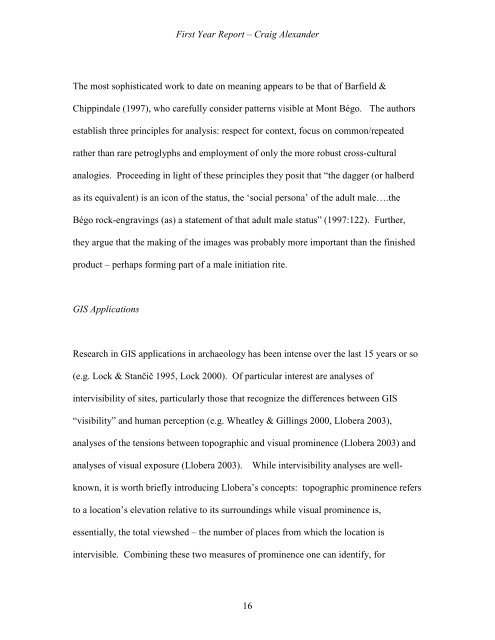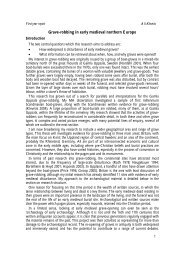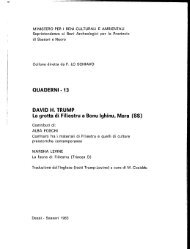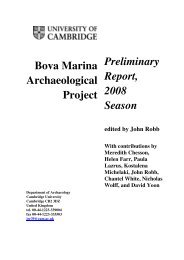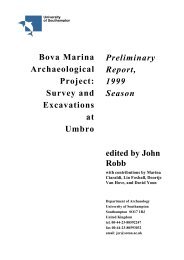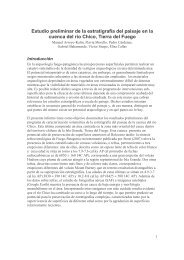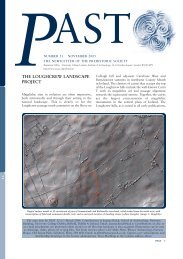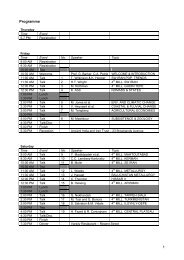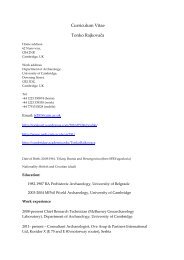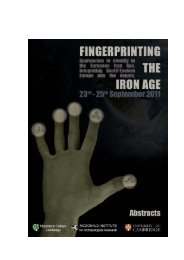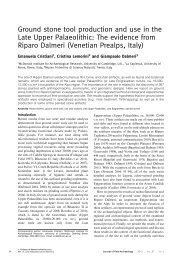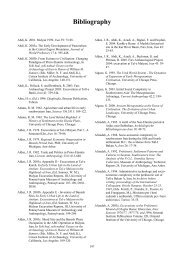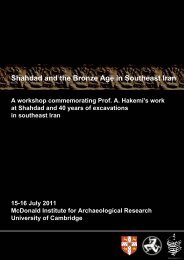The Landscape Context of Valcamonica/Valtellina Alpine Rock-Art
The Landscape Context of Valcamonica/Valtellina Alpine Rock-Art
The Landscape Context of Valcamonica/Valtellina Alpine Rock-Art
You also want an ePaper? Increase the reach of your titles
YUMPU automatically turns print PDFs into web optimized ePapers that Google loves.
First Year Report – Craig Alexander<br />
<strong>The</strong> most sophisticated work to date on meaning appears to be that <strong>of</strong> Barfield &<br />
Chippindale (1997), who carefully consider patterns visible at Mont Bégo. <strong>The</strong> authors<br />
establish three principles for analysis: respect for context, focus on common/repeated<br />
rather than rare petroglyphs and employment <strong>of</strong> only the more robust cross-cultural<br />
analogies. Proceeding in light <strong>of</strong> these principles they posit that “the dagger (or halberd<br />
as its equivalent) is an icon <strong>of</strong> the status, the ‘social persona’ <strong>of</strong> the adult male….the<br />
Bégo rock-engravings (as) a statement <strong>of</strong> that adult male status” (1997:122). Further,<br />
they argue that the making <strong>of</strong> the images was probably more important than the finished<br />
product – perhaps forming part <strong>of</strong> a male initiation rite.<br />
GIS Applications<br />
Research in GIS applications in archaeology has been intense over the last 15 years or so<br />
(e.g. Lock & Stančič 1995, Lock 2000). Of particular interest are analyses <strong>of</strong><br />
intervisibility <strong>of</strong> sites, particularly those that recognize the differences between GIS<br />
“visibility” and human perception (e.g. Wheatley & Gillings 2000, Llobera 2003),<br />
analyses <strong>of</strong> the tensions between topographic and visual prominence (Llobera 2003) and<br />
analyses <strong>of</strong> visual exposure (Llobera 2003). While intervisibility analyses are well-<br />
known, it is worth briefly introducing Llobera’s concepts: topographic prominence refers<br />
to a location’s elevation relative to its surroundings while visual prominence is,<br />
essentially, the total viewshed – the number <strong>of</strong> places from which the location is<br />
intervisible. Combining these two measures <strong>of</strong> prominence one can identify, for<br />
16


